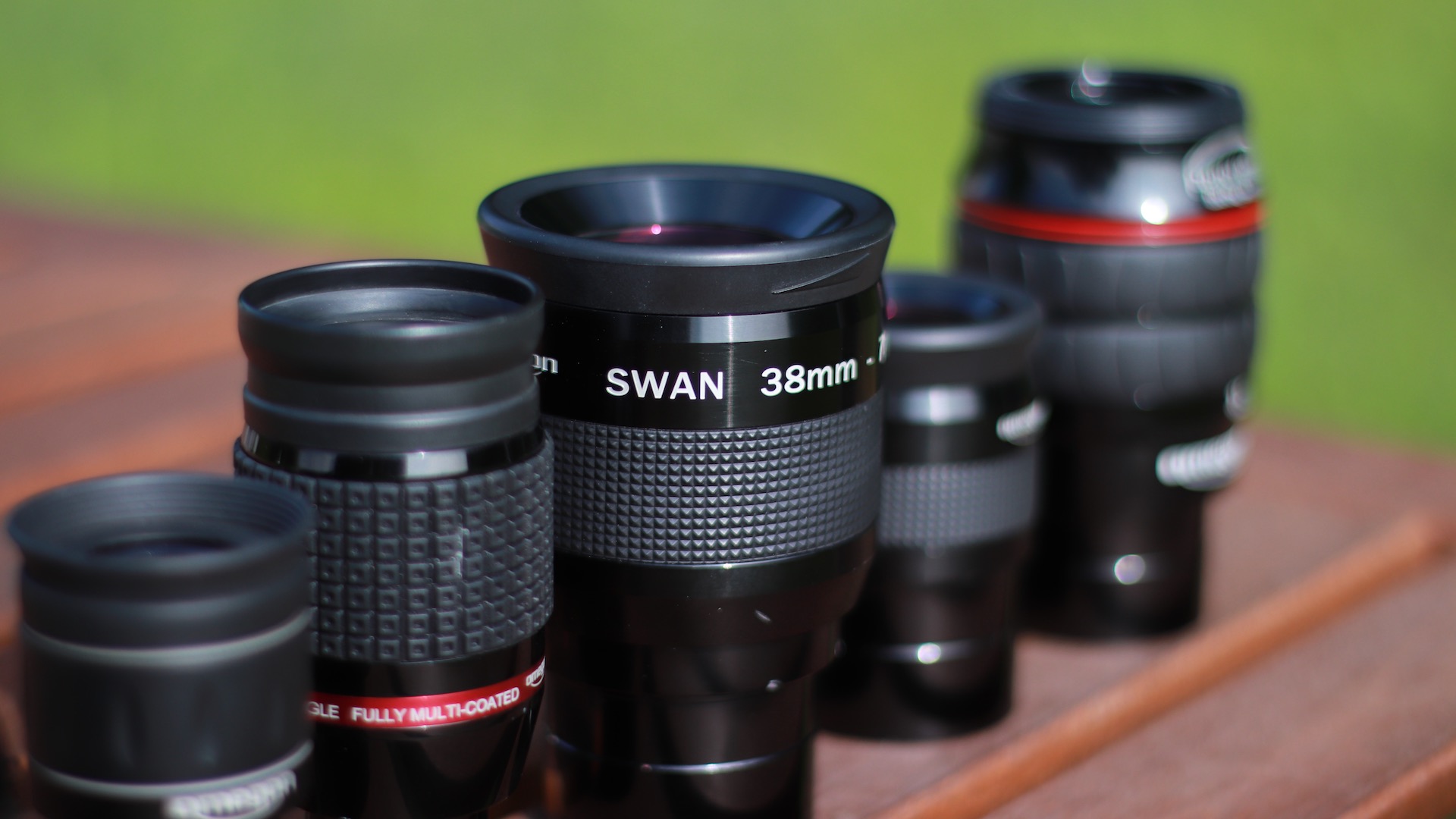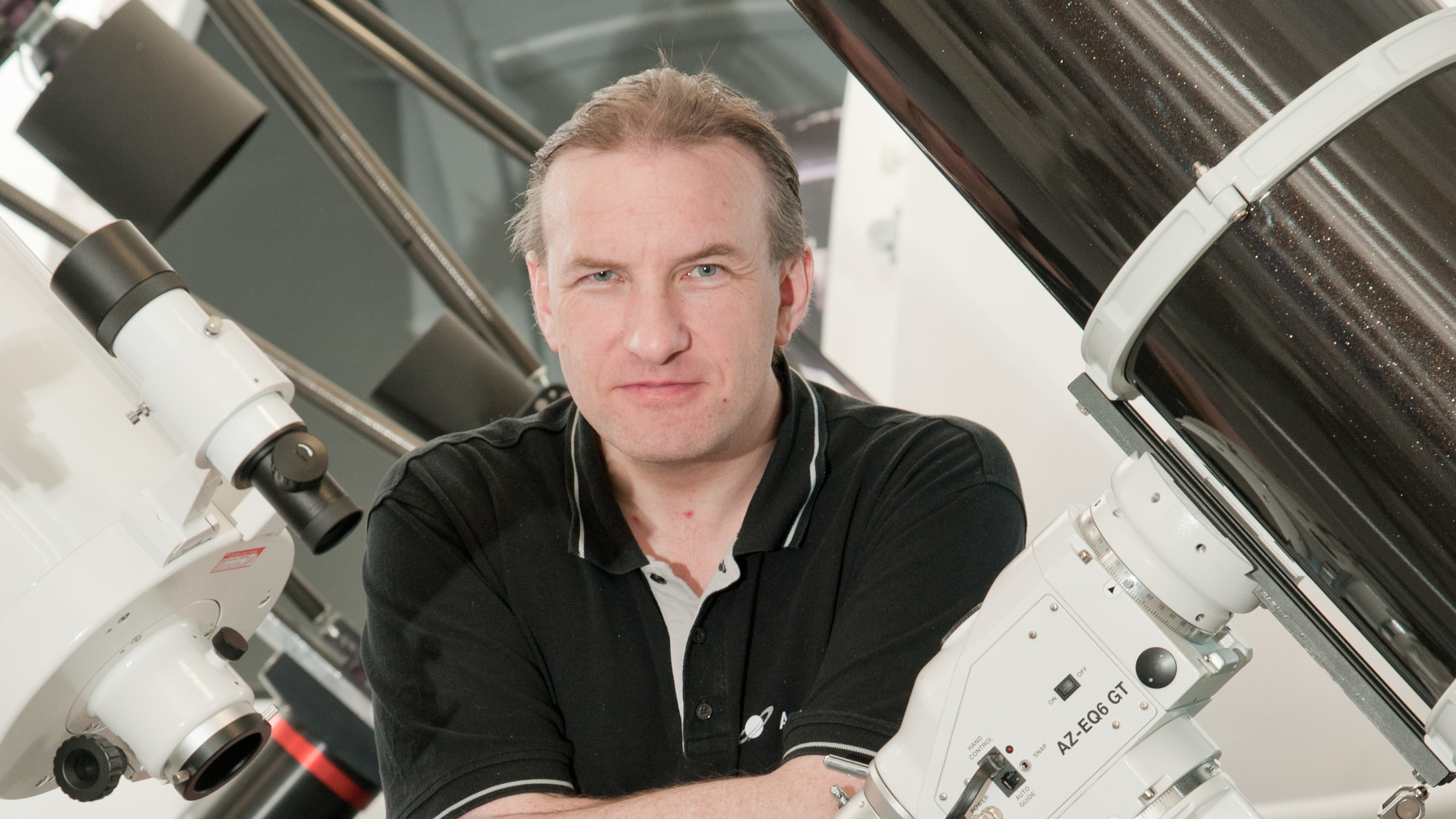Eyepieces for beginners
Eyepiece sets usually accompany entry-level telescopes, which should cover at least your basic needs.

However, competitive pressures mean that manufacturers are forced to include only the most rudimentary accessories of often moderate quality in such sets.
Usually there are only one or two eyepieces, that only offer low magnification. Better quality high magnification eyepieces are more difficult to produce in acceptable quality, and can no longer be included in the price of the set.
Besides, you should not try to save money when selecting eyepieces. The eyepiece is half of the telescope. Without a good eyepiece, the telescope cannot deliver the performance that the design is capable of. As a rule of thumb, you should plan to spend an additional 50% of the telescope price on accessories.
Which magnification?
An important parameter when selecting an eyepiece is the telescope’s aperture ratio. The aperture ratio can be calculated by dividing the telescope's focal length by its diameter. For a telescope with a 150 mm aperture and 1,200 mm focal length, the aperture ratio is 1:8. The eyepiece with the maximum magnification has a focal length of half the aperture ratio. In our example, that would be 4mm.
In addition to the maximum magnification, there is also the so-called optimum magnification. The focal length of the eyepiece for optimum magnification corresponds to the aperture ratio. That would be 8 mm in our example. In addition, we also know the theoretical minimum magnification. The eyepiece focal length for the minimum magnification corresponds to 7 times the aperture ratio. In our example, that would be 7 x 8, that is, 56 mm.
However, practice it is often different to the theory. This is also the case here. The maximum and minimum magnifications are usually barely usable. The seeing, the telescope and the age of the observer mean that adjustments are necessary. As a rule, for maximum magnification, you should choose an eyepiece focal length that is one or two millimetres longer than calculated. For light-polluted German skies, when performing the calculation for an eyepiece for minimum magnification, it is best to use 5 times the aperture ratio to be on the safe side.
You can therefore say:
- Focal length for maximum magnification in mm = aperture ratio / 2 + 1mm
- Focal length for optimum magnification in mm = aperture ratio in mm
- Focal length for minimum magnification in mm = 5 x aperture ratio
There is a big jump between the minimum magnification and the optimum magnification. It therefore makes sense to buy a further eyepiece with double the aperture ratio as an intermediate size. Generally, with such an eyepiece, you will reach the best limiting magnitude for deep sky observation. The minimum magnification is best suited for large nebulae and for finding objects. The optimum and the maximum magnification provide the best results for the Moon and planets.
The ideal eyepiece
There are more than three dozen different series of eyepieces on the market, which are designed to meet all sorts of requirements. The optimal eyepiece would deliver a large field of view, good axial sharpness, good edge sharpness, good colour correction, low astigmatism, low coma, low distortion, high transmission, a comfortable viewing position, and ideally should cost next to nothing. Of course, such a thing does not exist. So, depending on your budget, compromises must be made.
The best eyepieces
For high and medium magnification, we recommend the Omegon Flatfield ED eyepieces in the lower price segment and, for spectacles wearers, the Omegon LE Planetary series. In the mid-range price segment, Baader Morpheus eyepieces are a good choice. In the high-end segment, the excellent Pentax XW and TeleVue Delos series are recommended.
For low magnification, in the mid-range price segment, we recommend the aspherical Baader Hyperion eyepieces (36 mm and 31 mm focal lengths). In the high-end segment, again the Pentax XW and TeleVue Delos series, with the long focal length TeleVue Nagler replacing the Delos eyepieces.
In the high-end segment, with respect to 100-degree-eyepieces, there is hardly an alternative to Televue Ethos. However, the models of Explore Scientific deserve mentioning:
Explore Scientific 100°-eyepieces
A well-priced alternative are the Omegon Panorama II eyepieces, which also provide a 100 degree field of view:
This short overview of the different designs cannot do justice to the huge range of eyepiece series available. Over the years, experienced observers often develop their own very different favourites. A good place to determine your own preferences is at a star party. Almost every weekend in the spring and autumn you’ll find a gathering of astronomy fans somewhere in Germany where you can gain practical experience. Of course, we are also happy to help you with an individual consultation!
Author: Bernd Gährken
Bernd is an astrophotography specialist. Through his observing, he shows again and again what is possible for committed amateurs.
Bernd studied business administration and worked as a customer advisor for telescopic systems before he came to us. With decades of experience in the field of astronomy and numerous engagements such as at the Munich public observatory, as author of various articles, and as a speaker at conferences, he is no stranger to the amateur astronomy scene.

